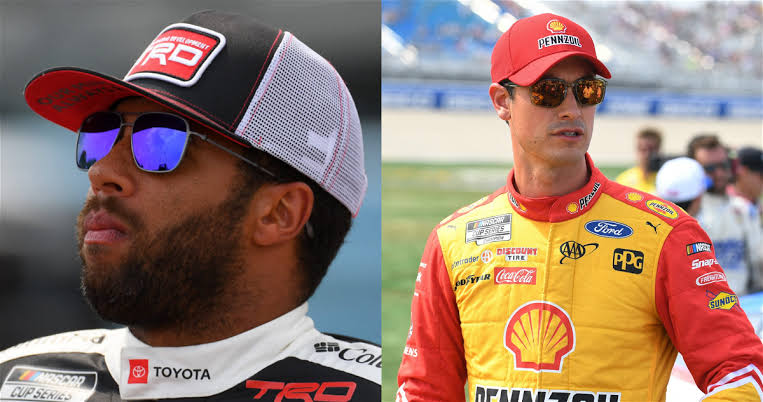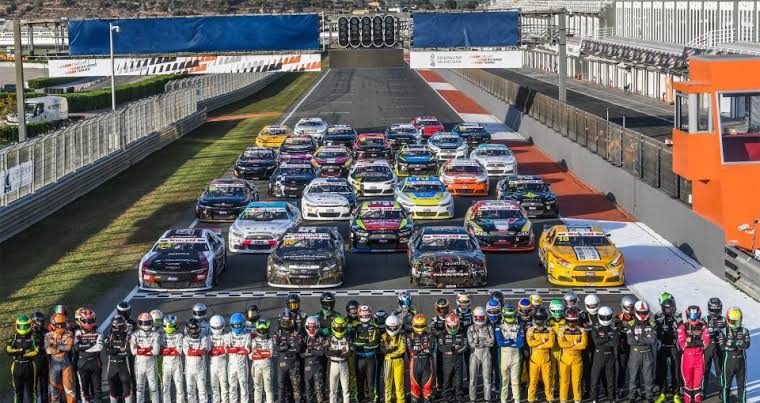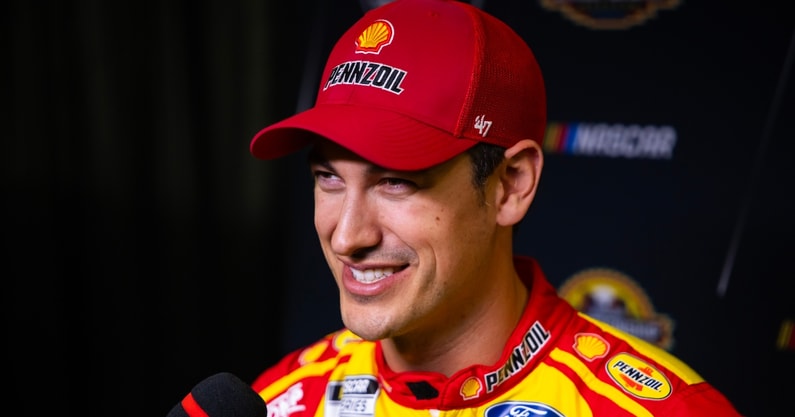Superspeedways are among the most thrilling and challenging tracks in motorsports. Due to their high-speed nature, overtaking becomes a delicate balance of skill and risk, often leading drivers to make bold moves to gain an advantage. However, to ensure the safety of both drivers and spectators, NASCAR has implemented strict regulations for these circuits. The tragic death of legendary driver Dale Earnhardt in the final lap of the 2001 Daytona 500 was a turning point, leading to the introduction of several safety measures, including the controversial ‘Double Yellow Line’ (DYL) rule.
Initially, only two tracks were classified as superspeedways: Daytona and Talladega. These tracks are known for their long straightaways and high speeds, making them especially dangerous. Recently, however, Atlanta Motor Speedway, with its 1.54-mile layout, has also been included in this category, despite being shorter than the original superspeedways. This decision has raised questions, especially in light of incidents like Joey Logano’s controversial move against Daniel Suarez, where Suarez was forced below the yellow line while battling for the lead. These situations spark debates about the application of penalties and the consistency of rule enforcement.
The Controversy Surrounding the Double Yellow Line
The Double Yellow Line rule has become a hot topic in NASCAR, particularly after a recent incident during the Quaker State 400. Fans and analysts alike questioned why Joey Logano was not penalized, while Justin Haley faced severe consequences for a similar situation in the past. This debate resurfaced on the popular Door Bumper Clear podcast when a listener brought up the discrepancy in how the rule was enforced. Back in 2018, during the Xfinity Series Firecracker 250 at Daytona, Haley was penalized and lost a potential victory after his car slipped just beyond the inner yellow line while passing for the lead. In contrast, Logano was not penalized for a similar move at the Atlanta race and went on to win, securing his place in the playoffs.
Freddie Kraft, a veteran spotter in NASCAR, provided insight into the reasoning behind these differing outcomes. He pointed out that Haley’s penalty was clear-cut. According to Kraft, Haley “made a block and drove below the line to do so,” which warranted a penalty. On the other hand, Logano’s actions were more nuanced. Kraft explained that Logano didn’t make as aggressive a block as Haley had. Instead, Logano moved down the track, leaving just enough space between his car and the yellow line. This forced Daniel Suarez to go below the line in an attempt to pass, but no penalty was issued in this case.
The key issue here is the consistency of penalty enforcement. Brett Griffin, spotter for Bubba Wallace, defended Suarez’s decision to go below the line, arguing that Suarez had no other option and would have caused a wreck had he stayed on his current path. According to Griffin, Suarez was merely reacting to Logano’s aggressive driving, and he did what he needed to do to avoid an accident. The debate then shifted to whether Logano should have been penalized for forcing Suarez into such a precarious position.
Kraft and Griffin, along with other racing insiders, have differing opinions on who was ultimately at fault. Kraft noted, “I don’t know who you could definitively say is at fault. You could argue it endlessly.” While he acknowledged that Logano’s move wasn’t as blatant as Haley’s, Kraft believed that there was still room for a penalty in the situation. Logano’s block, though less aggressive, still led to Suarez going below the line—a violation according to the DYL rule.
TJ Majors, another experienced spotter, weighed in with his perspective. He argued that if someone goes below the line, there are usually two reasons: either (a) they were forced there by another driver, or (b) they deliberately chose to go below the line. Majors agreed that in this instance, one of the drivers involved should have faced a penalty, though he didn’t specify which one.
The Double Yellow Line Rule: What Does It Say?
According to NASCAR’s official rulebook, the Double Yellow Line rule is designed to prevent drivers from gaining an unfair advantage by moving off the track surface. The rule states:
“Competitors must remain above the double yellow lines that mark the entire racetrack. If NASCAR determines that a vehicle has crossed below these lines to gain an advantage, that vehicle will receive a black flag. Additionally, if a driver forces another competitor below the double yellow lines to prevent them from passing, that driver may also be black-flagged.”
In simple terms, crossing below the yellow line is forbidden, whether done voluntarily to gain an advantage or as a result of being forced by another driver. NASCAR’s regulation also clarifies that a car is considered “below the line” when its left-side tires are beneath the left-most yellow line, separating the racing surface from the apron. This rule aims to maintain fairness during overtakes and to prevent drivers from using the apron to make risky moves.
However, despite the clear language of the rule, the enforcement of it has often been inconsistent. Fans, drivers, and industry insiders have all voiced their concerns about the uneven application of penalties. In Haley’s case, he was penalized immediately for going below the line, losing his chance at victory. But in Logano’s case, no such penalty was applied, even though Suarez had been forced below the line as a direct result of Logano’s move.
The Need for Consistent Enforcement
The controversy surrounding the Double Yellow Line rule underscores a larger issue within NASCAR: the need for consistent rule enforcement. As Freddie Kraft pointed out on the Door Bumper Clear podcast, “You can’t call it out of bounds and then not enforce it, because they are out of bounds.” If NASCAR wants to maintain the integrity of its races, it must ensure that the rules are applied fairly and consistently across all tracks and drivers.
The inconsistency in applying the DYL rule is frustrating for both drivers and fans. Without clear and consistent enforcement, it becomes difficult to know what to expect during races, leading to confusion and controversy. In the case of the Quaker State 400, many fans felt that NASCAR had let Logano off the hook, while others believed Suarez had made the right decision by avoiding a potential crash.
Ultimately, the debate over the Double Yellow Line rule and its enforcement will likely continue. But one thing is clear: if NASCAR wants to maintain fairness and safety on its superspeedways, it must establish clear guidelines and apply them evenly to all competitors, regardless of the circumstances.




